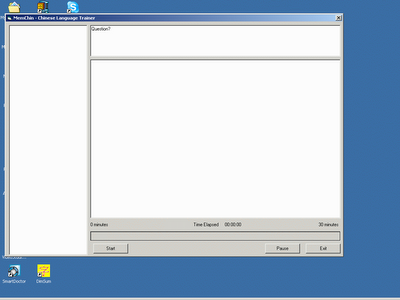OK. Here is the first instalment of my travels in Taiwan story. I have decided to call it, “Taiwan In The New Year”.PART I - PreparationUsually travel in a non-English speaking country is fraught with misunderstandings. Once while travelling in Malaysia a taxi driver followed us around the airport for over an hour simply because I didn’t know how to say to him, “We are going to catch the shuttle bus from the hotel we are staying at, we don’t need a taxi.” By the time we did get on the shuttle bus our unwanted taxi driver had become involved in a fight with a second taxi driver who had also approached us.
The day after this as we climbed into a different taxi, I showed the driver a card with the name of our hotel printed on it. He happily said something in Malaysian while nodding his head, and then drove us to what I think was a school or university of some sort. Presumably this was where all foreigners who catch taxis go.
I was hopping that we wouldn’t have this type of problem during our planned trip to Taiwan, as my girlfriend and travelling companion was able to speak fluent Mandarin. Of course there was bound to be ample opportunity for myself to get into trouble.
We had been to Taiwan before and spent most of our time in the capital of Taipei, except for a short trip we made to the city of Hualien.
This time we planned to do a complete journey around the island, starting on the Chinese New Year and hopefully arriving back in Taipei in time to see the Lantern Festival fifteen days later. Our itinerary was planned as follows. One week to see the sights of Taipei and the surrounding area, then on New Year day travel north to see the port city of Keelung and down the east coast to Hualien. In Hualien we planned to see the Taroko National Park which is considered by many to have the most spectacular scenery in Taiwan. Unfortunately we were unable to see the park on our last trip to Hualien because it had been closed due to a tourist having fallen off a cliff to his death.
After Hualien we would travel south to the Kenting National Park at the southern most tip of Taiwan. Then north to the historic city of Tainan, and finally we would head into the centre of the island to Alishan where we planned to see Yu Mountain, one of the highest peaks in East Asia.
If all went well the entire trip should take around three weeks.






